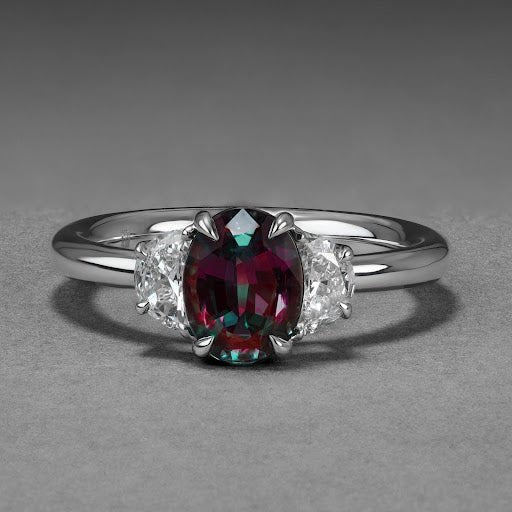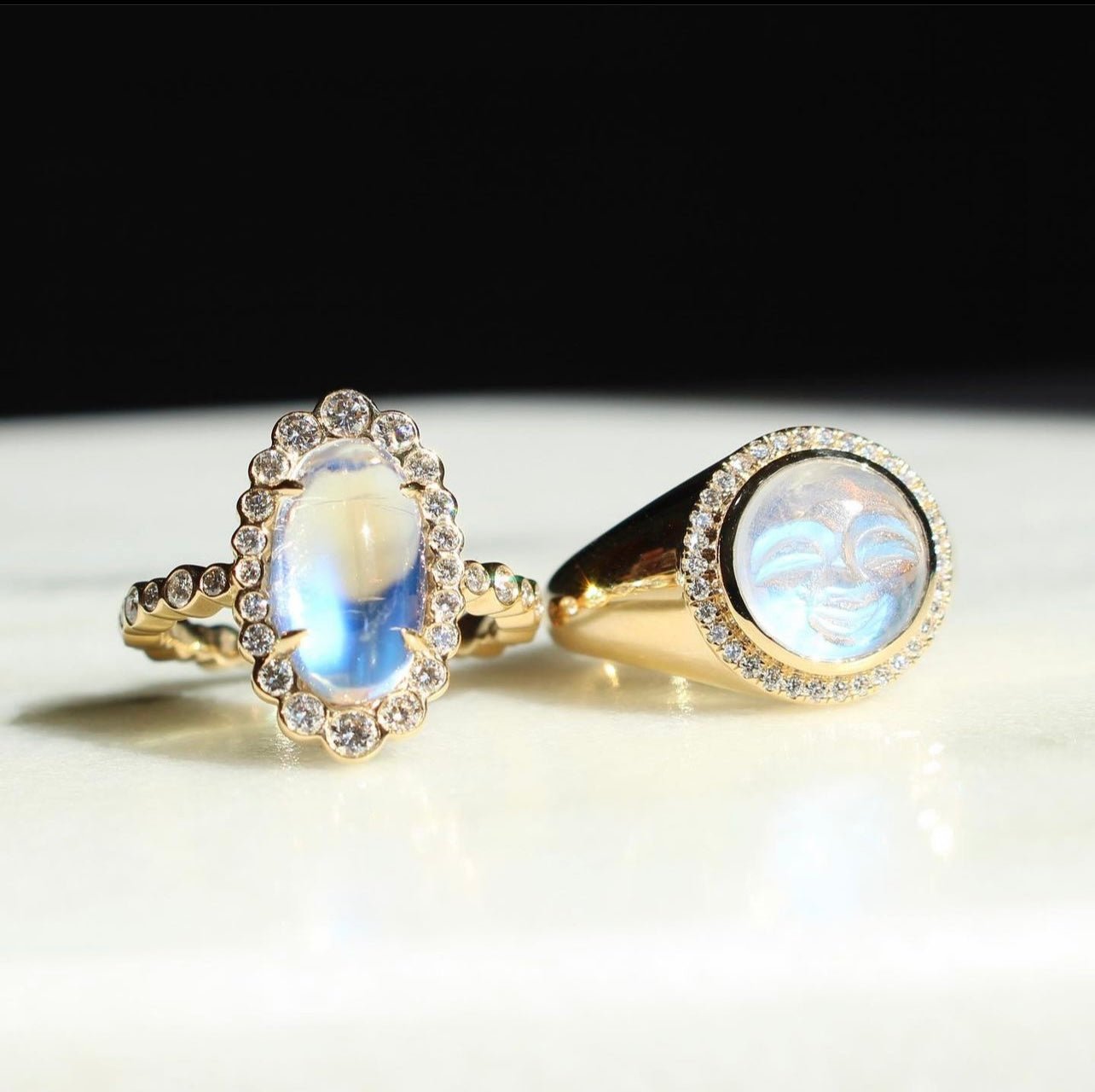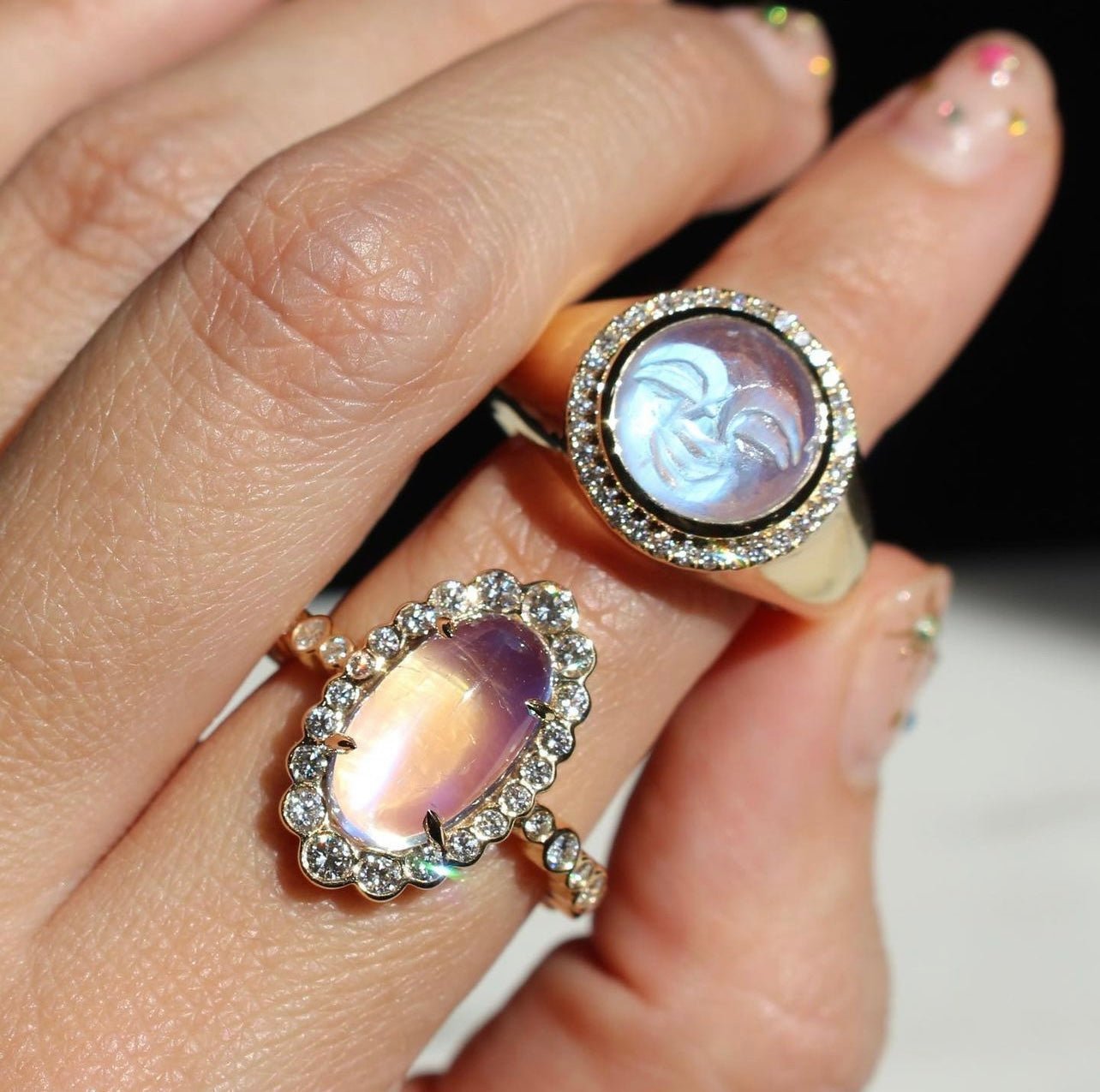[text]
Gems are wonderful additions to any wardrobe. When you venture into the world of jewelry collecting, it does not take long to find out that there is a big difference between fine pieces and costume pieces. This also goes for the idiosyncrasies of lab-created and real jewelry, just as it does between real and raw gems.
Alexandrite is one of the rarest gems in the world. It is more precious than diamonds and more valuable than sapphires, emeralds, or rubies. This is mostly due to its famous color-changing properties, with brilliant greens that sparkle in daylight and gorgeous reds that pop at night.
Our personal fascination with alexandrite at Mark Henry Jewelry has led us to three decades of intense studying, mining, cultivating, and designing jewelry with these gems in mind. This puts us in the unique position to share our advice in determining an alexandrite that was artificially created and one that is natural.
If you are looking to make the most of your latest investment in an alexandrite piece - whether it is a gift for a June birthday or 55th wedding anniversary- allow us to guide the way.
Extravagant Origins
Russia’s Ural Mountain range is home to the original discovery of alexandrite in 1834. Nils Gustaf Nordenskiöld, a mineralogist, got far more than he bargained for when what appeared to be a beautiful green gem suddenly transformed into the likes of a ruby when the sun went down. He quickly realized the magic that he had found.
Alexandrite is supposedly named for Czar Alexander of Russia, who was assassinated in 1881. The red and green of the gem were evocative of the colors of Imperial Russia, and it began to symbolize the royal family and Russia’s prominence at the time.
By the 1890s, the alexandrite supply had essentially been fully mined in Russia, and supply could no longer meet demand. When the magic struck again in a 1987 Brazilian discovery, gemologists and jewelers rejoiced.
[/text]
[text]

[/text]
Properties of Real Alexandrite
Natural alexandrite has many particular characteristics that contribute to its overall value, apart from its color-changing phenomenon.
Alexandrites are derived from the mineral Chrysoberyl, with a composition of BeAl204. They have a refractive index of 1.746 to 1.755, a birefringence of 0.008 to 0.010, and a specific gravity of 3.73.
The Mohs scale is a determining factor in so many parts of gem wearability. The higher ranking a gem is on a ten-point scale indicates its durability. Alexandrite is incredibly hard, ranking in as an 8.5 on the Mohs scale. This means that it can be worn in pieces that may see some wear and tear, like rings. Withstanding pressure is a telltale sign of real alexandrite.
Other features of alexandrite include a cat’s eye phenomena, one of the notable inclusions that occur. It is common for alexandrite to be designed using mixed cuts. Since they are rarely found in anything but one-carat sizes, lowering the mass altogether reduces waste and preserves an already-dwindling supply.
Raw vs. Real
It is important to establish that real alexandrite can be lab-created, despite the fact that it is not raw and untouched. However, raw alexandrite is favored and valued at a much higher price due to its rarity.
While pieces that have been enhanced are not necessarily any less beautiful or genuine, most elite jewelers will only work with naturally occurring gemstones. Besides their rarity, natural gemstones are often prized for being part of our geological heritage here on this planet.
Laboratory Roots
Alexandrite that is made hydrothermally is more costly than a synthetic gem of a different type. This is due to the inherent value of alexandrite itself in its raw form. The higher the price point of the original natural gem, the more expensive a synthetic edition will be.
Alexandrite that is lab-created, for all intents and purposes, is chemically identical to its naturally occurring sibling. However, that being said, lab-grown alexandrite mimics each other, while genuine pieces from mines are each unique by the very merit of their formation process.
Many rare fine jewels are being made in laboratories partly due to ethical concerns in certain mines. If you are investing in a genuine piece of gemstone jewelry, it is paramount to go to a trusted dealer that only works with ethically sourced mines where people work in fair and safe conditions.
How Old Is Your Gem?
Alexandrite is no new find, which we mentioned earlier. Due to its global appeal and rampant popularity, many buyers often find synthetic alexandrite that is quite a bit older than one might suspect.
One key way to determine if your piece is bred from a lab is to monitor its color changes. It is natural for alexandrite to go from blue to purple rather than green to red. However, it is present in mainly African gems - which were only discovered in recent years. If your piece is upwards of forty years old and has this different hue switch, take caution.
Key Phrasing
When looking into real and lab-created alexandrite, two words matter most: spinel and corundum.
While it may seem like synthetic alexandrite is far easier to come across than a raw version of the gem (which is very true), the alternative version is also rare. This is because synthetic corundum and synthetic spinel typically take their place as alexandrite imposters.
The pair can mimic a genuine color change and are easily confused with the real gem. Additionally, sapphire and garnet are known to swap colors in a similar way to alexandrite.
For synthetic corundum, the ruse is due to a color change from purple in artificial lighting to a grey-blush in the daytime. Synthetic spinel can be even trickier, changing from red to green in a more traditional alexandrite format.
True synthetic alexandrite is not far from real alexandrite, and there are many who love these pieces. As long as you are informed about your purchases, you are sure to find a quality piece you love.
Gemologists - And Jewelers- Know Best
If you are having trouble identifying the origins of a piece of alexandrite or a question about its heritage, it is probably time to reach out to someone in the gem field. It does not need to be a gemologist, however. Jewelers have access to a range of specialized equipment, which can reveal tiny details otherwise unknown, which indicate real alexandrite.
For example, microscopes set to a 10x magnification show inclusions that are common in natural alexandrite. If no inclusions are seen by the person helping you, and the gem is over a carat, it is highly unlikely you would be sold such a rare alexandrite find for a low price.
Refractive Research
Another way that a specialist can help you is by studying the refractive index of your gem. Real alexandrite has a refractive index somewhere between 1.746 and 1.755. It is also doubly refractive.
On the other hand, corundum is also doubly refractive but has a refractive index that falls between 1.762 and 1.770. Spinel is even easier to weed out when looking at the refractive index, as it is singularly refractive and sits at 1.73.
Value Equals Validity
Just like any exotic gem, alexandrite can rack up a hefty charge. This, however, is very noticeable when it is real. At Sotheby’s Magnificent Jewels 2015 auction, a Ceylon alexandrite went for $754,000.
Similarly, a 21-carat alexandrite (which is incredibly rare, since real alexandrite usually is not over one carat) sold for $1.325 million Swiss Francs in 2014 at Geneva Magnificent Jewels. It had been priced between $450,000 and $650,000.
Saturation of color, trueness of green and red hues, and ability to swiftly switch in between daytime light and artificial light are all markers of the most valuable alexandrite. This is the kind of gem Mark Henry always sought after for all three decades that we have been in business.
Using only the finest alexandrite, we create beautiful, unique pieces that will last for generations. So whether you adore statement rings or unique pendants, or important bracelets, there is something for everyone.
Authentic Beauty
Our team works relentlessly to deliver you the highest-quality alexandrite in every design imaginable. Our collection is among the best in the world, hailing from unreachable Brazilian mines and producing dazzling pieces.
As one of the most versatile and wearable gems, alexandrite is more than just an exotic find; it is a piece that defines beauty itself.
[row::whats-the-difference-featured-products::Shop The Collection]
Sources:
Is Lab-Created Alexandrite Real Alexandrite? | Gem Society


